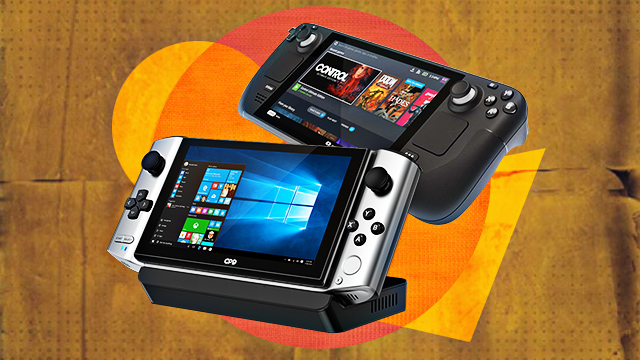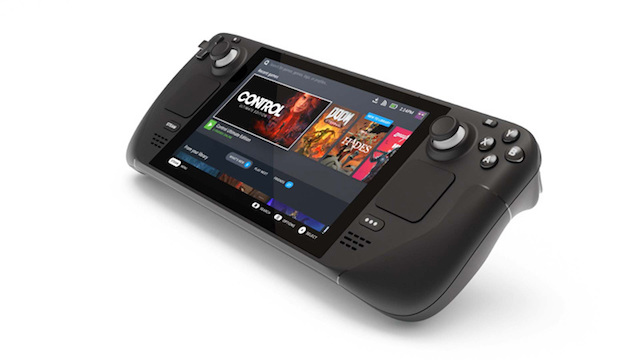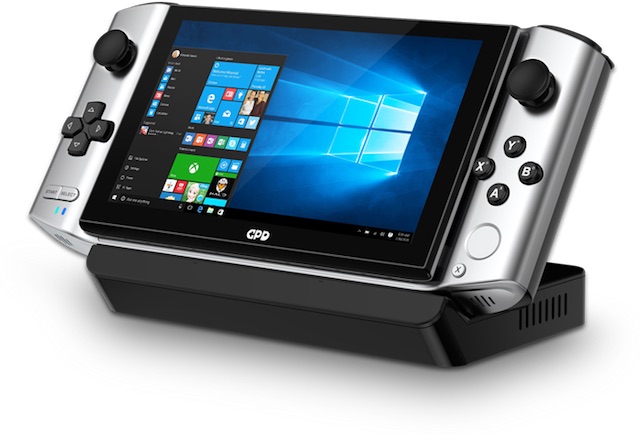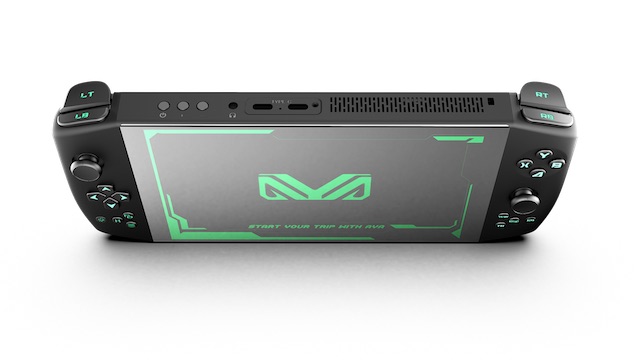
(SPOT.ph) PC gaming is almost often a desk-bound activity. Over the years, building a gaming PC has become a popular technological subculture complete with extreme builds that can cost as much as a car. When PC gamers need a portable machine, they often turn to gaming laptops that mitigate the problem of mobility somewhat. Thankfully, technology has improved when it comes to creating more powerful portable hardware that can meet the demanding system requirements of modern PC games.
As a dedicated handheld gaming device that’s also a home-console hybrid, the Nintendo Switch currently has no rival. Introduced in 2017, the Switch has gone through three other versions with only minor upgrades to its hardware. Despite that, it has sold over 84.5 million units so far.
With the Switch having dominance over handheld gaming, a new breed of portable gaming machines are making their way into the eager palms of gamers. While these are not yet available in the Philippines, there's no stopping you from adding them to your "soon-to-buy" shopping list.
Your future handheld gaming devices are here:
Steam Deck (U.S. $399/64GB, roughly P19,960; U.S. $529/256GB, roughly P24,460; U.S. $649/512GB, roughly P32,470)

The Steam Deck is the first handheld gaming device from Valve Corporation which runs Steam, the world’s largest digital game store. The Steam Deck is a portable gaming device with hardware specs that can rival a gaming laptop. It has a built-in seven-inch touchscreen with a 1280x800 resolution and 16:10 ratio running at 60hz. The main hardware is powered by a custom accelerated processing unit (APU) with a Zen 2 as the CPU and an RDNA 2 as the graphics chip. The CPU has a total of four cores that run from 2.4 to 3.5Ghz. It has a total of 16GB quad-channel LPDDR5 RAM. The chipset is similar to the ones inside generation consoles as a PlayStation 5 or Xbox Series X. The Steam Deck will come with three storage options (64GB, 256GB, 512GB) plus a microSD slot for additional storage. The Steam Deck also has standard connectivity features such as Bluetooth, Wi-Fi, USB-C and headphone jack. Estimated battery life of the device is two to eight hours depending on the game.
Similar to the Switch, there are control sticks, triggers, and buttons on both sides. Unlike the Switch however, the integrated side controllers of the Steam Deck are more ergonomic and feature curved hand grips and larger triggers and side buttons. Apart from the dual thumbsticks, unique to the Steam Deck are two capacitive touchpads for mouse-like control. The device also supports gyroscopic controls. These two control methods work well in games such as first-person shooters where the touchpads can be used in place of a mouse or the gyroscope which allows the user to mouselook just by moving the device.
Using the Steam Deck is as easy as logging in to your Steam Library and downloading your existing games. Plus, Valve says that the machine can handle almost all the games on Steam at 30 fps. In the hardware demos, the Steam Deck can be seen running strategy games, action RPGs and more graphically demanding games such as Jedi Knight: Fallen Order and Death Stranding.
In the future, Valve will also release a separate dock that turns the Steam Deck into a full0blown PC that’s connected to an external monitor as well as a keyboard and a mouse. The SteamOS is installed by default in the device but other operating systems like Windows and Linux can be installed as well. While Valve is releasing the 64GB version in December 2020 for the US/Europe/UK region, availability for other regions will be announced at a future date.
GPD WIN 3 (U.S.$999, roughly P49,972)

Although the name may not be as buzzy, GPD has been making handheld gaming PCs for quite some time. One of their flagship models is the GPD Win 3, a sleek portable gaming PC with a sliding form factor that’s reminiscent of some smartphone models. The basic shape of the Win 3 is similar to the Switch’s profile when folded with a pair of thumb sticks, directional key, action buttons, triggers, and bumper buttons on the sides. The screen slides up to reveal a lighted QWERTY keypad. The GPD Win 3 has a 5.5-inch Gorilla Glass touchscreen with 1280x720 resolution, 16:9 ratio, and 268ppi. Dual motors provide rumble and feedback in games.
The GPD Win 3 comes in two versions. The Standard version has an Intel i5 CPU (4.2GHz max speed) and the Advanced version with an Intel i7 CPU (4.7GHz max speed). Both models will be powered by an Intel Iris Xe graphics chip. Other common specs between models include 16GB of LPDDR4 RAM, 1TB NVMe 3.0 SSD, Windows 10 Home OS, and a 44Wh battery that’s good for six to eight hours of moderate gaming.
Depending on the Standard and Advanced GPD Win 3 model, the handheld can run games such as Doom Eternal with an average fps of 64 to 74, Valorant at 71 to 85 fps, The Witcher 3 at 60 to 76 fps, Control at 52 to 63 fps, Grand Theft Auto V at 74 to 84 fps and Microsoft Flight Simulator at 42 to 49 fps.
The GPD Win 3 will have accessories such a docking station for connecting to an external monitor, keyboard and mouse. A separate grip case can also be purchased for better handling ergonomics of the unit. Currently, the GPD Win 3 is available for pre-order on Indiegogo.
Aya Neo (U.S. $925/512GB, roughly P46,280; U.S. $1,015/1TB, roughly P50,780)

The Aya Neo has similar guts to the Steam Deck since it uses AMD’s Zen 2 architecture. The unit’s seven-inch touchscreen has a resolution of 1280x800, 215ppi, and 16:10 ratio. The Aya Neo is one of the first handhelds to use a 7nm AMD Ryzen 5 4500U CPU with six cores and max speed of 4.0GHz with an integrated AMD Radeon RX Vega for graphics and 16GB of LPDDR4x RAM. There’s an option for 500GB or 1TB of NVMe SSD for storage.
On both sides of the Aya Neo are twin joysticks, triggers, shoulder buttons, D-pad, and action buttons similar to the Switch’s layout. There’s also a built-in rumble motors, gyroscope, and accelerometer. In terms of running games, Horizon Zero Dawn runs at 40fps, Grand Theft Auto V at 30fps, Assassin’s Creed Valhalla at 30fps, and Cyberpunk 2077 at 30fps at low settings.
Battery life is estimated to be at five to six hours with its quick-charge function. Connectivity includes Bluetooth 5.0, WiFi 6, 3 USB-C ports and a 3.5 mm headphone jack. A docking station adds two more USB 3.0 ports, HDMI out, SD or TF card slot and ethernet port. Currently, the Aya Neo is available for order at the Aya Neo store.
[ArticleReco:{"articles":["86930","86929","86931","86920"], "widget":"Hot Stories You Might Have Missed"}]
Hey, Spotters! Check us out on Viber to join our Community and subscribe to our Chatbot.
Source: Spot PH
No comments:
Post a Comment